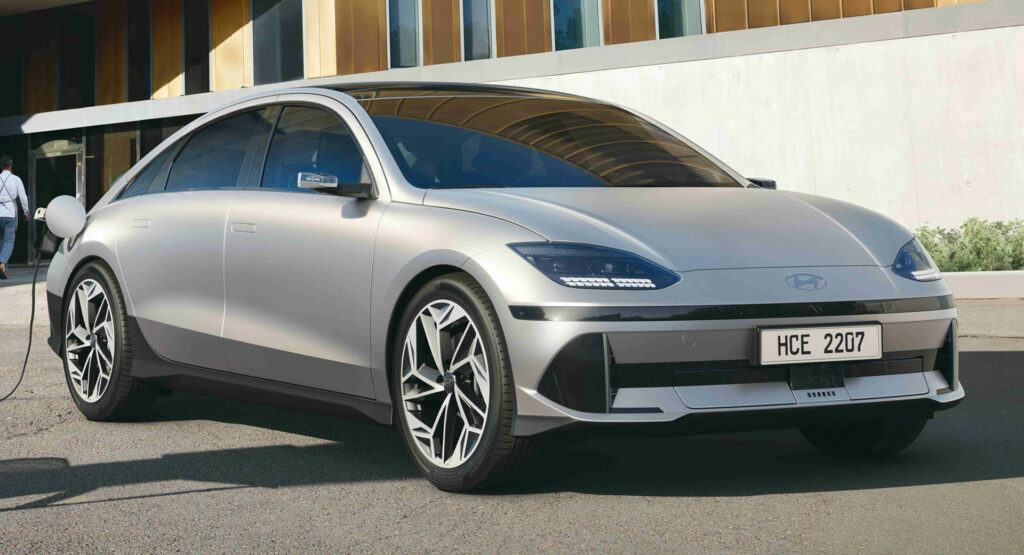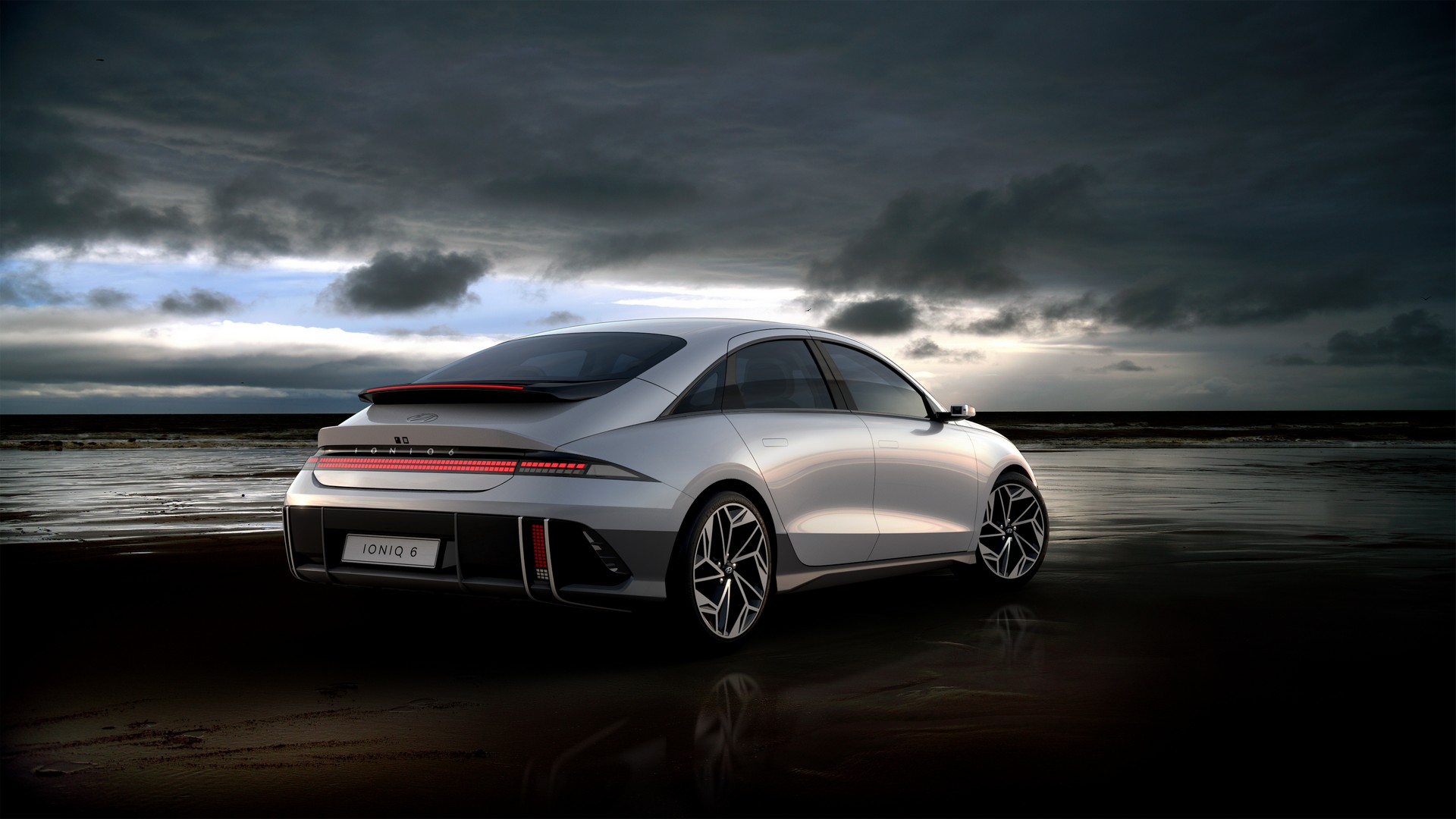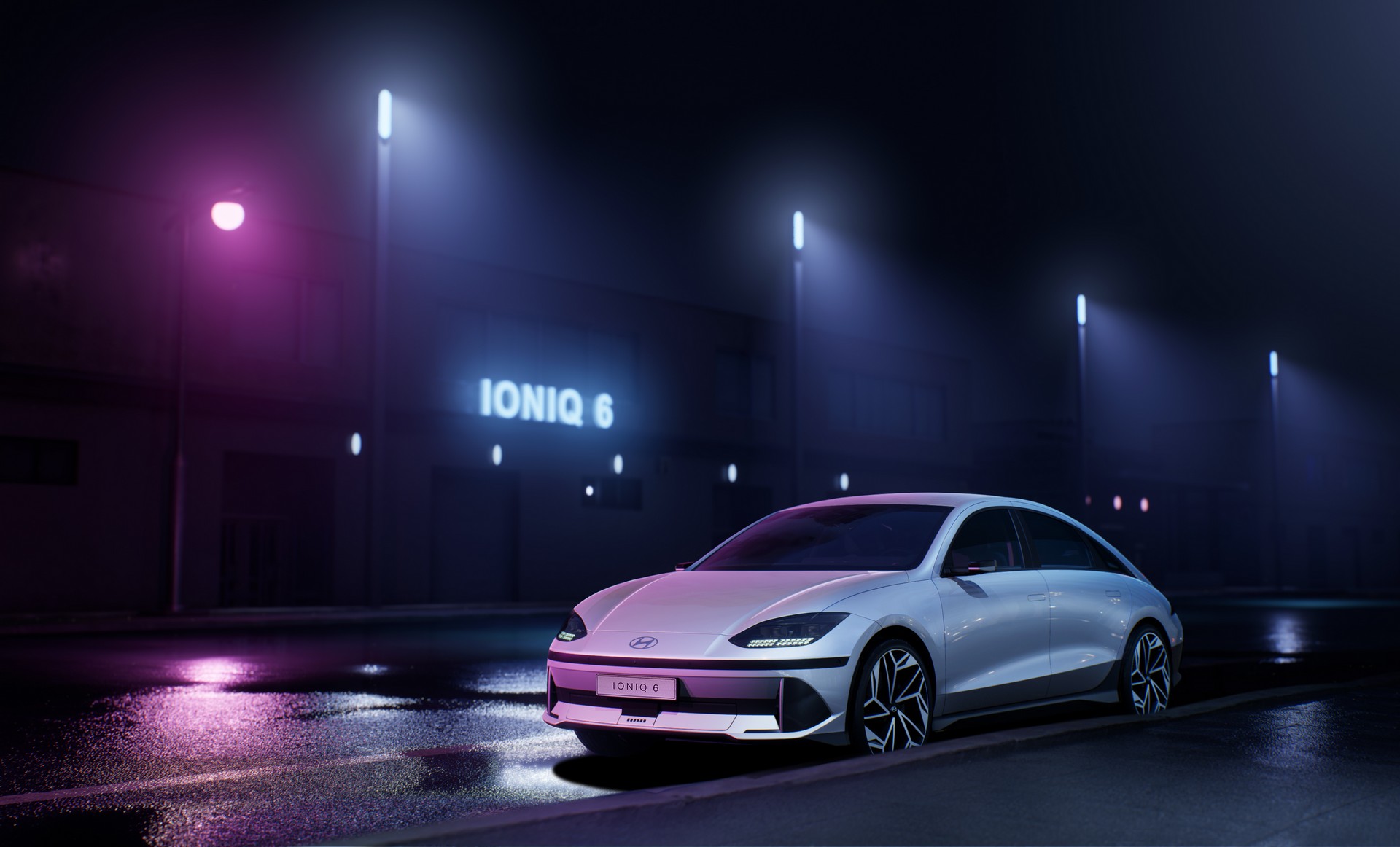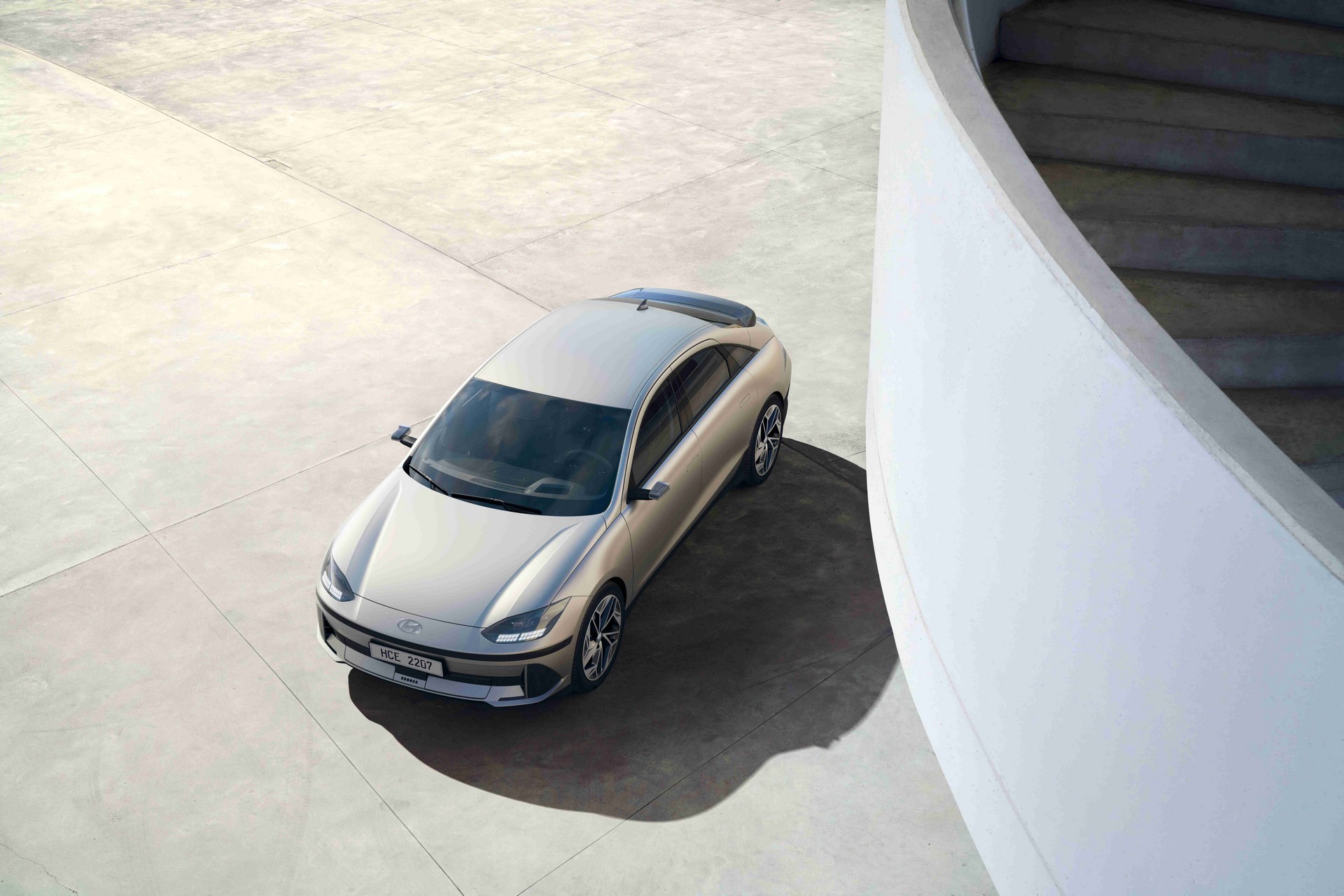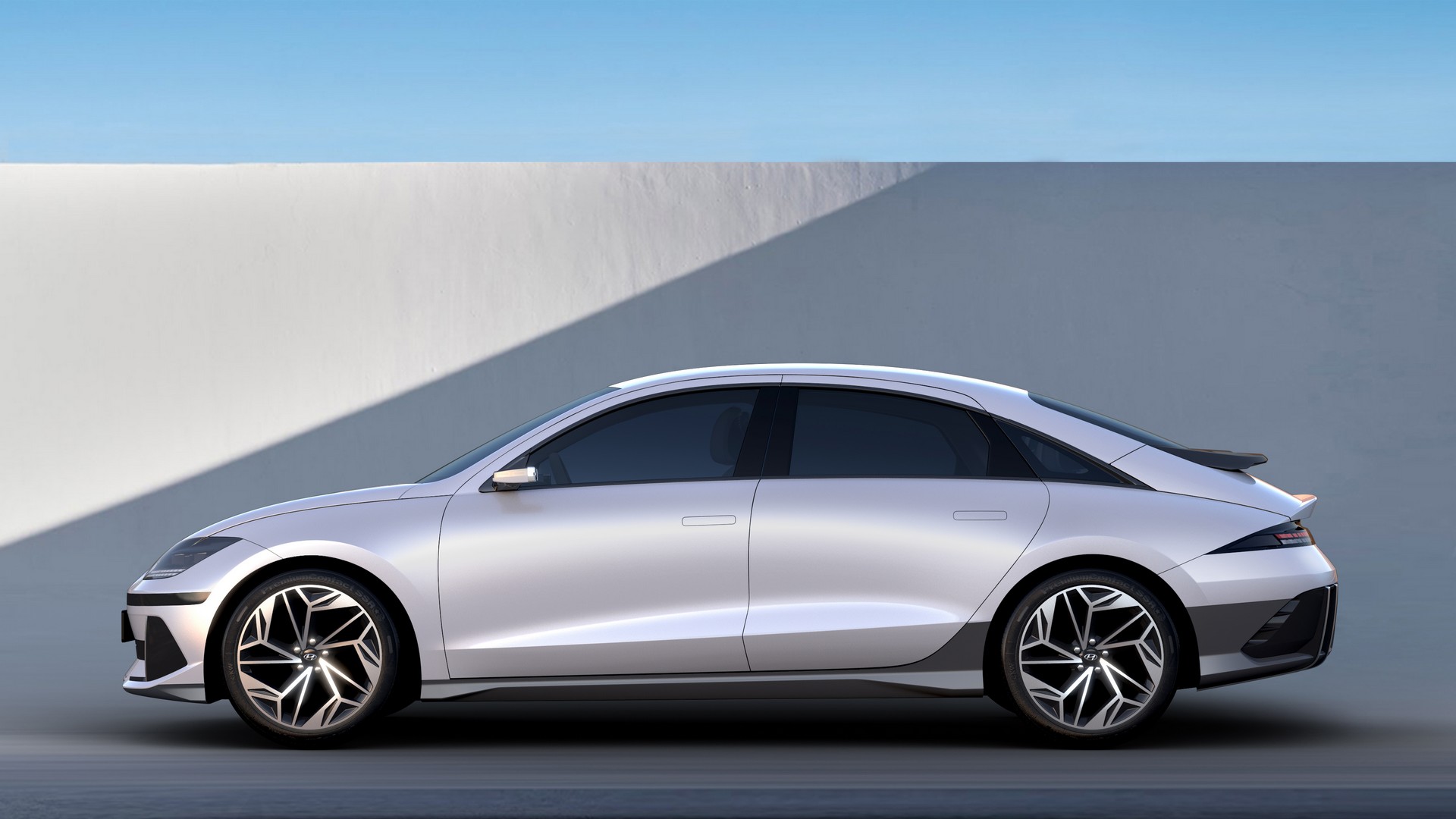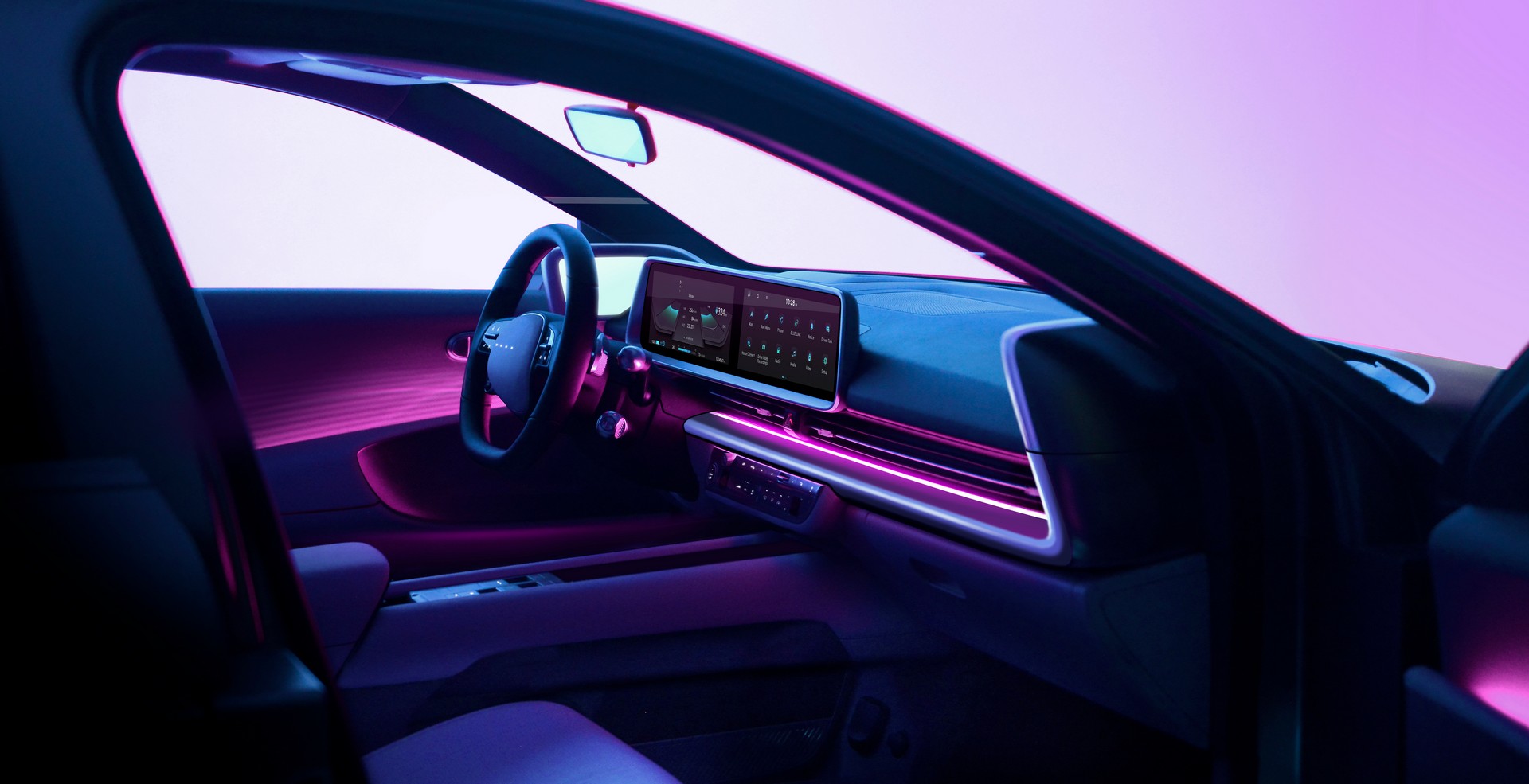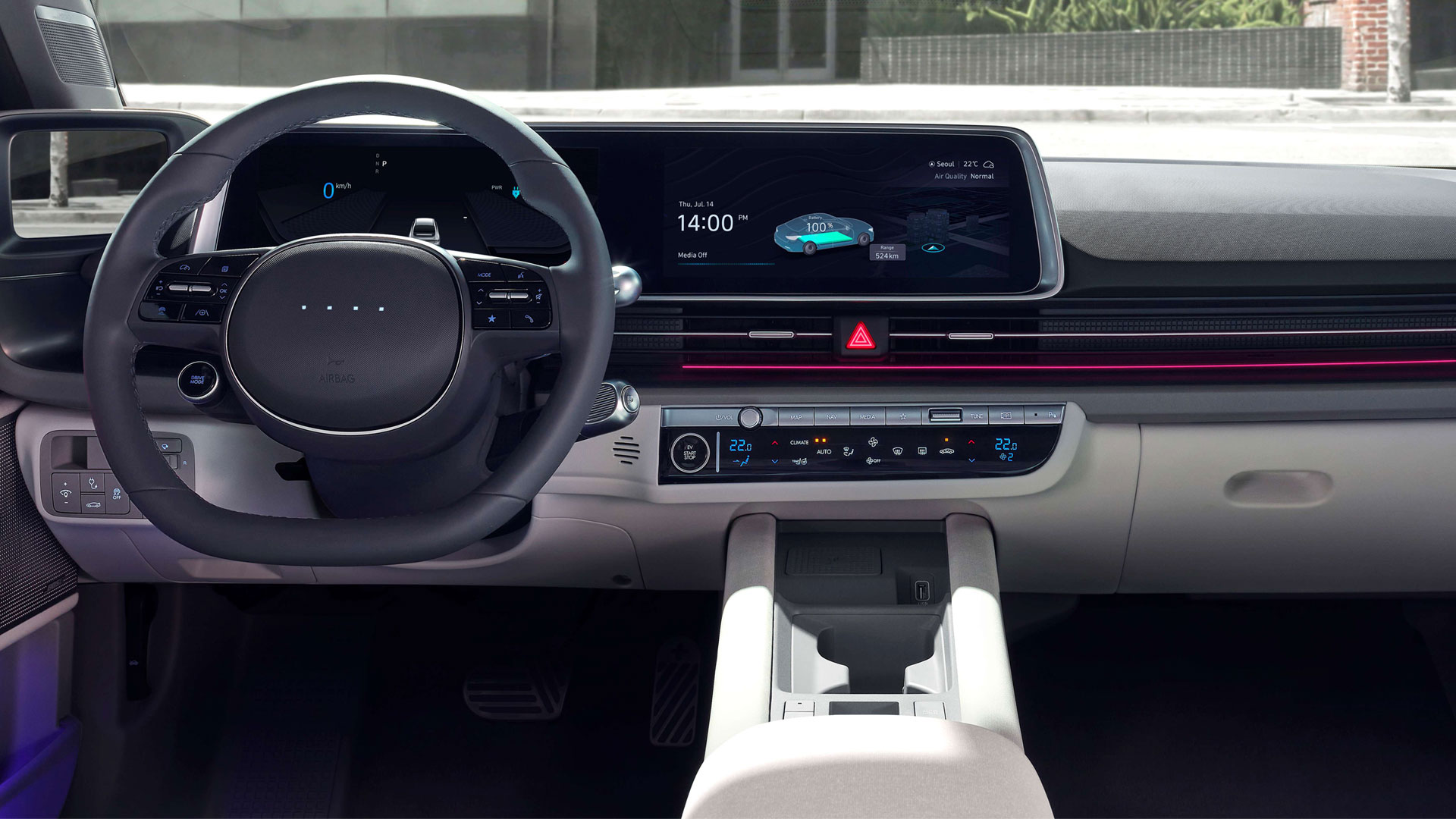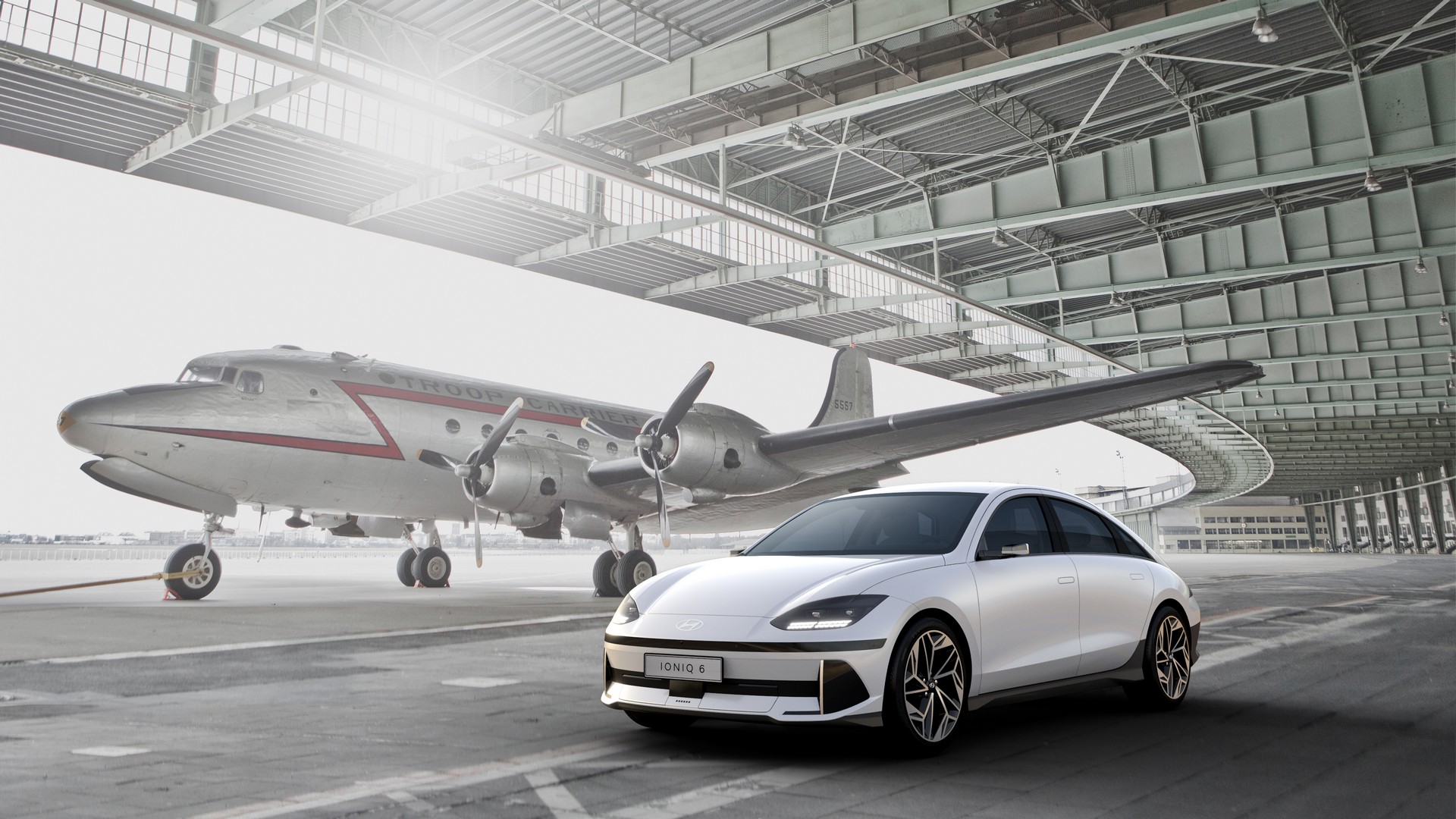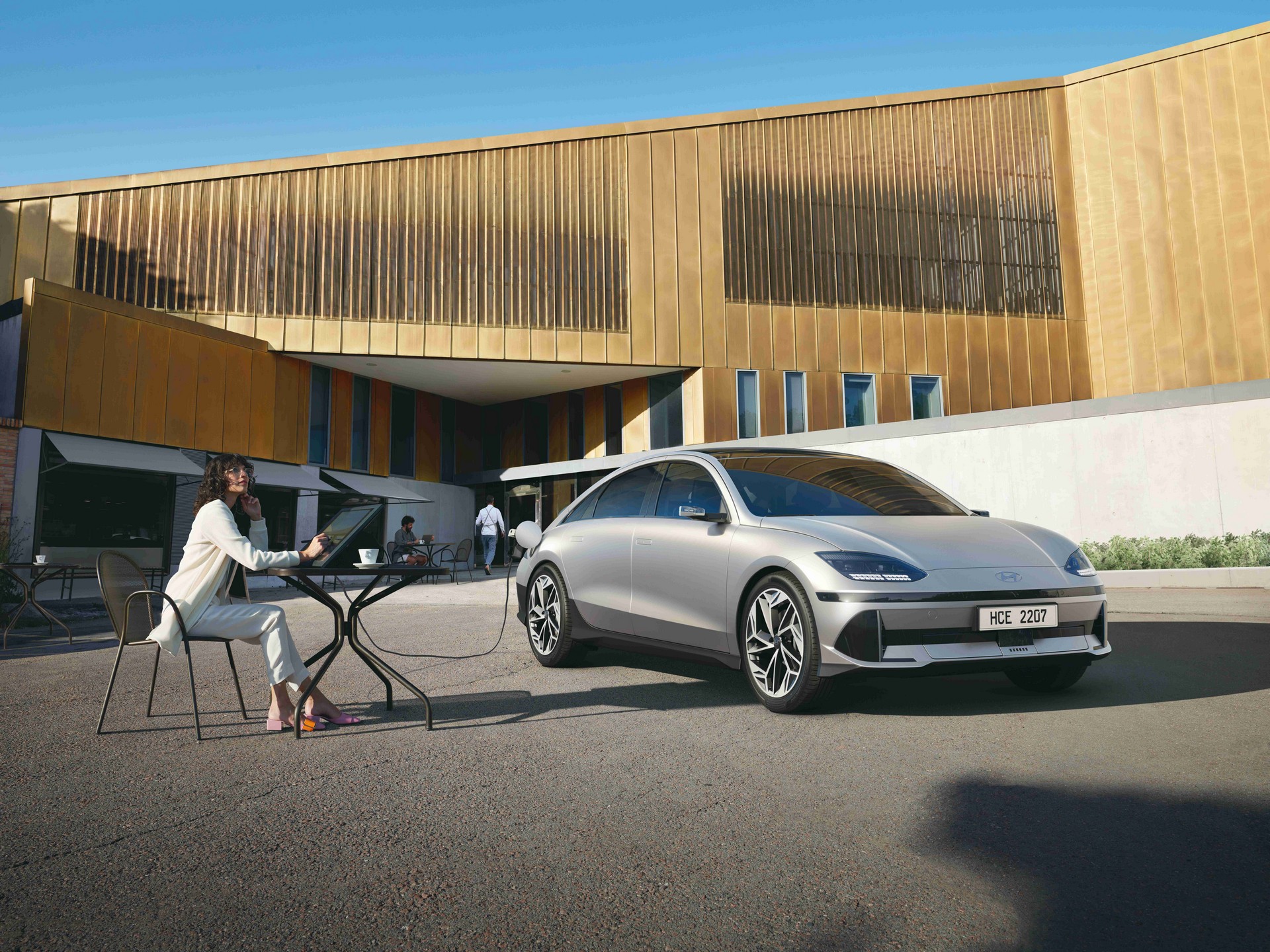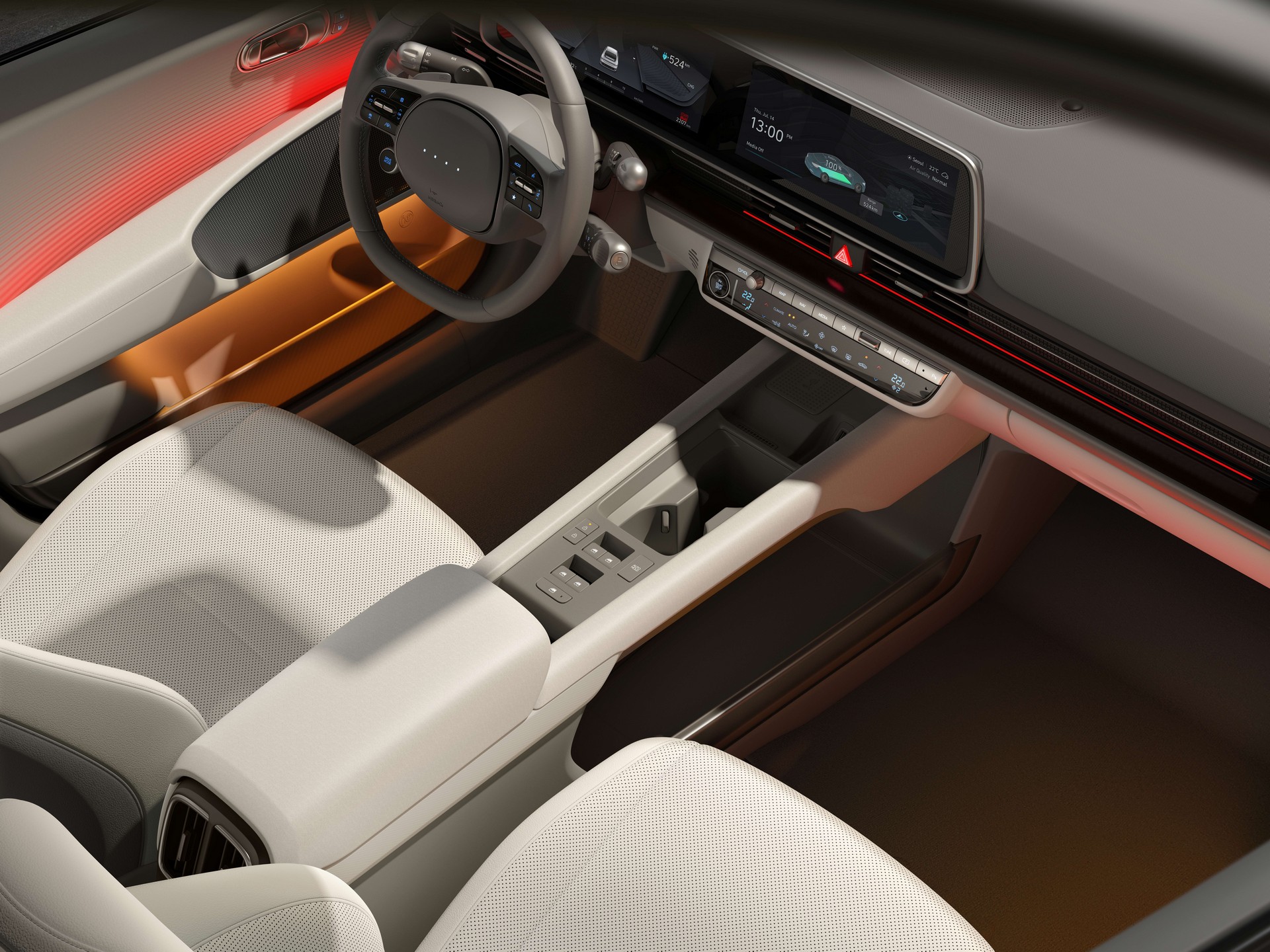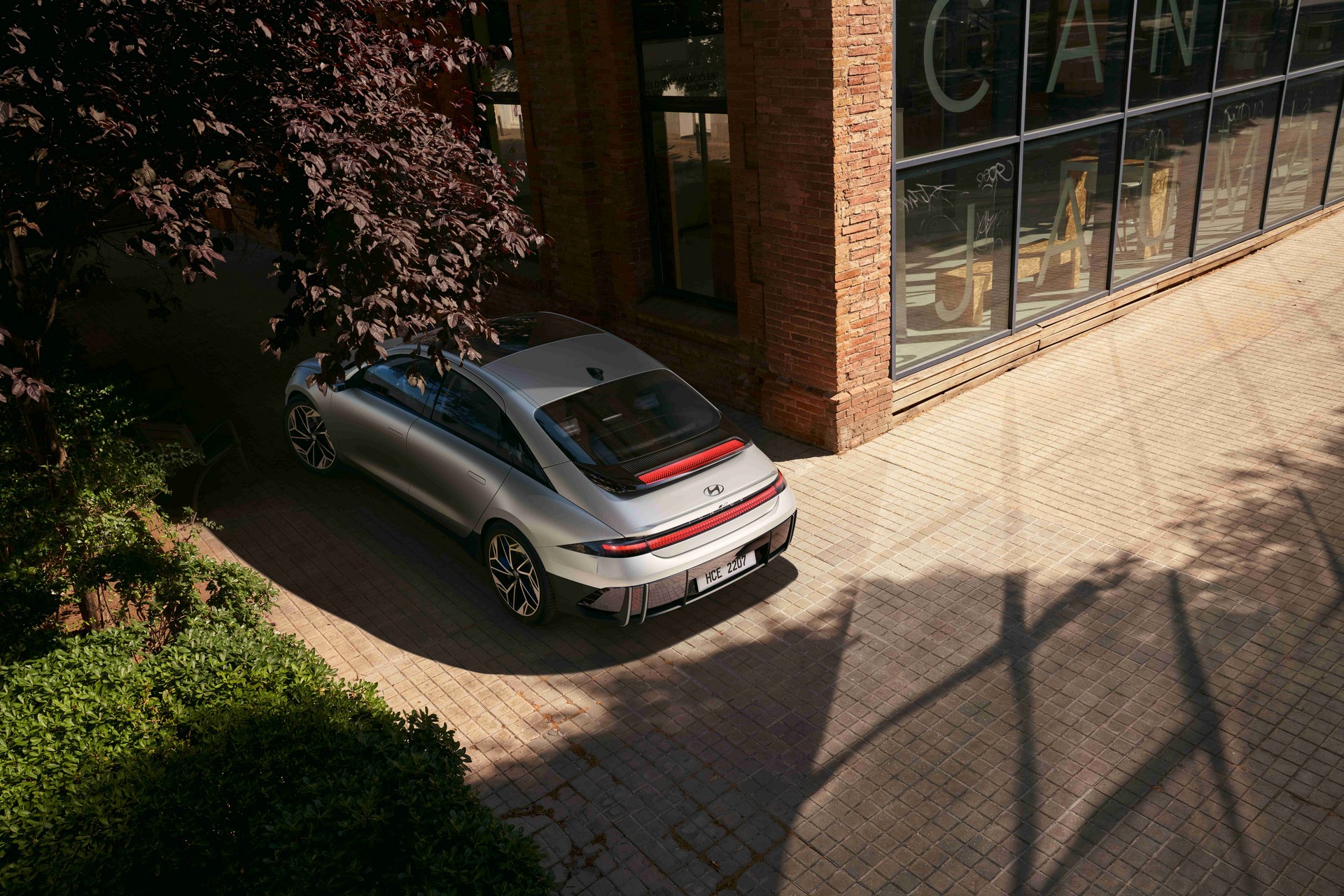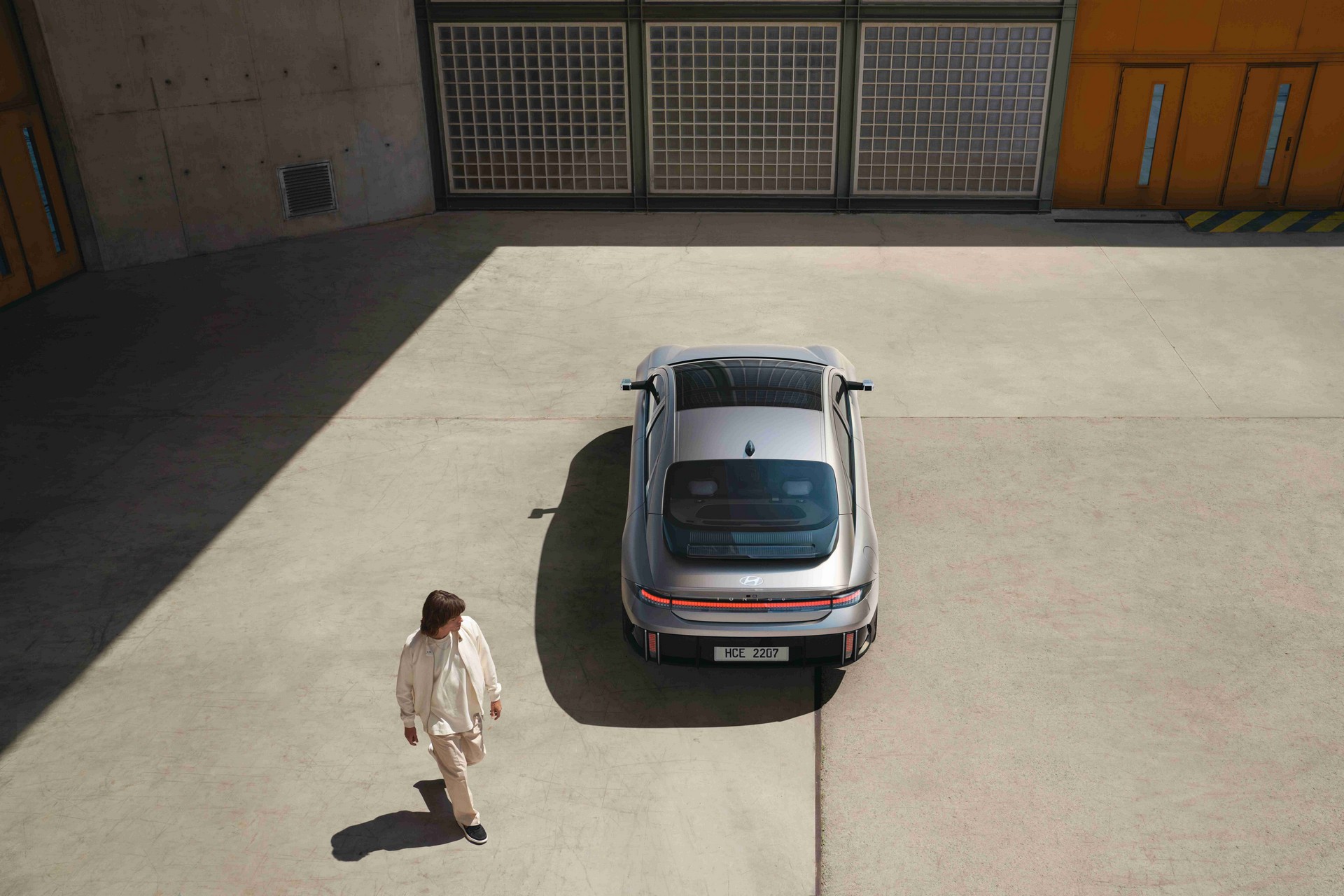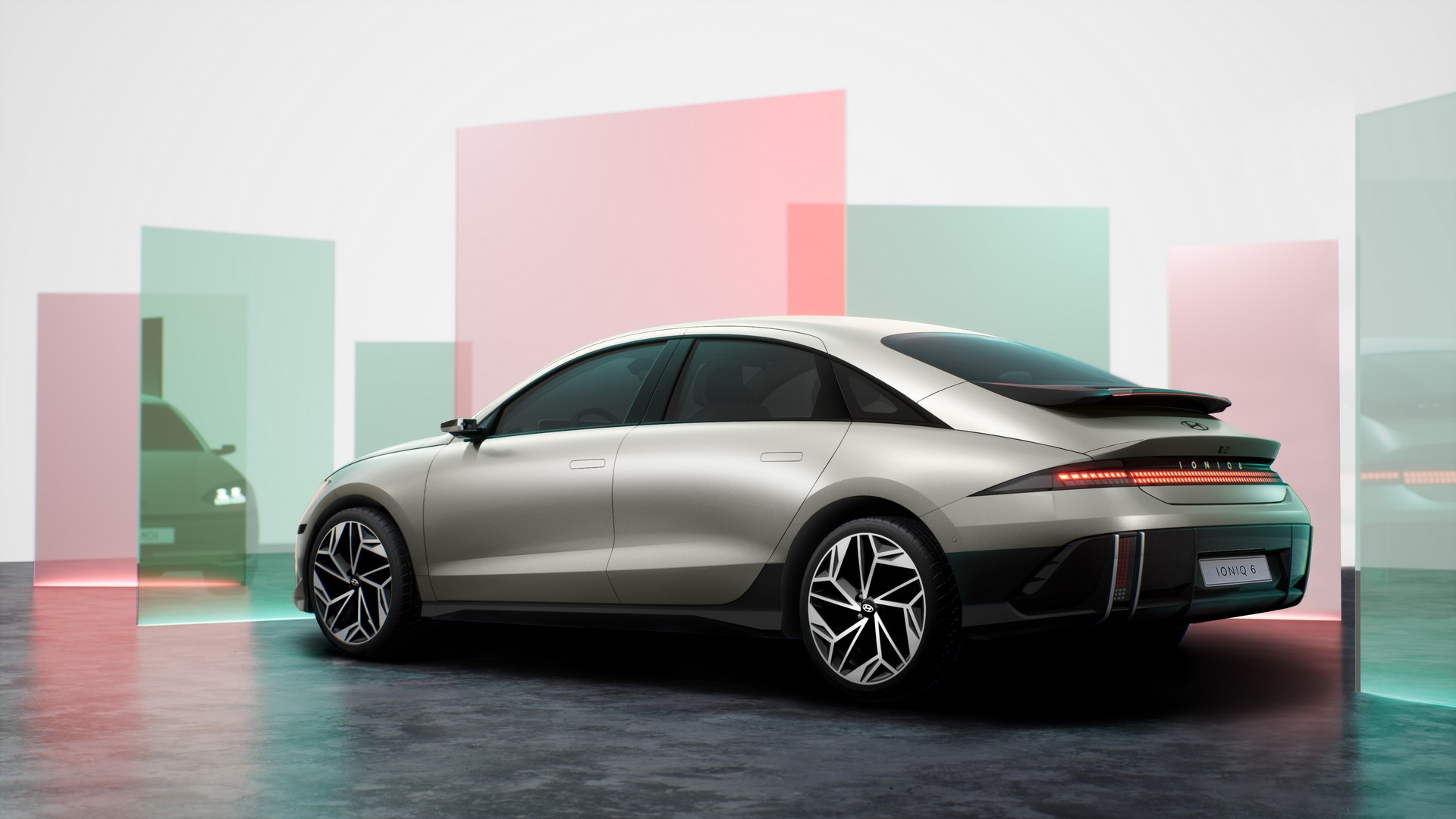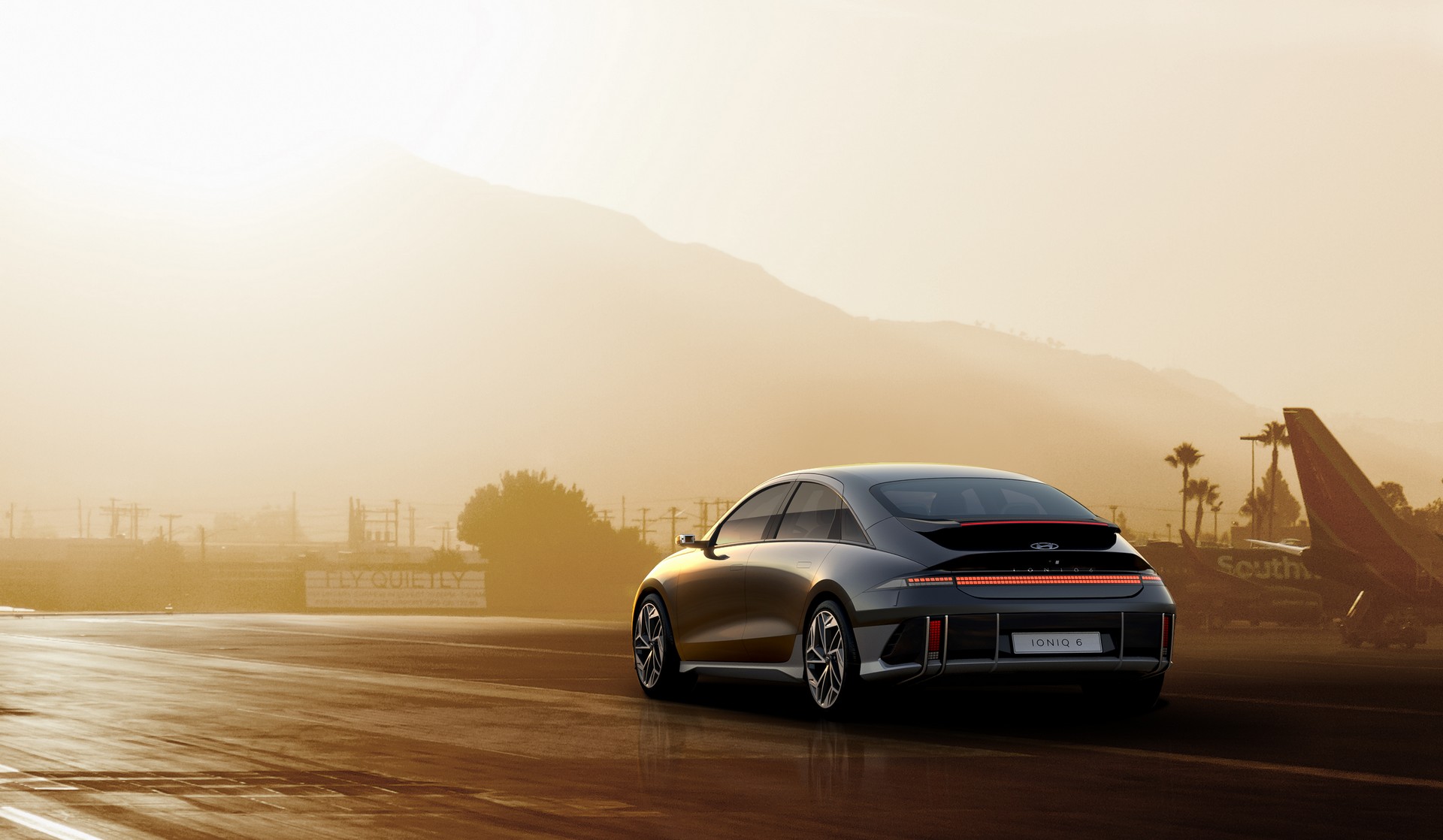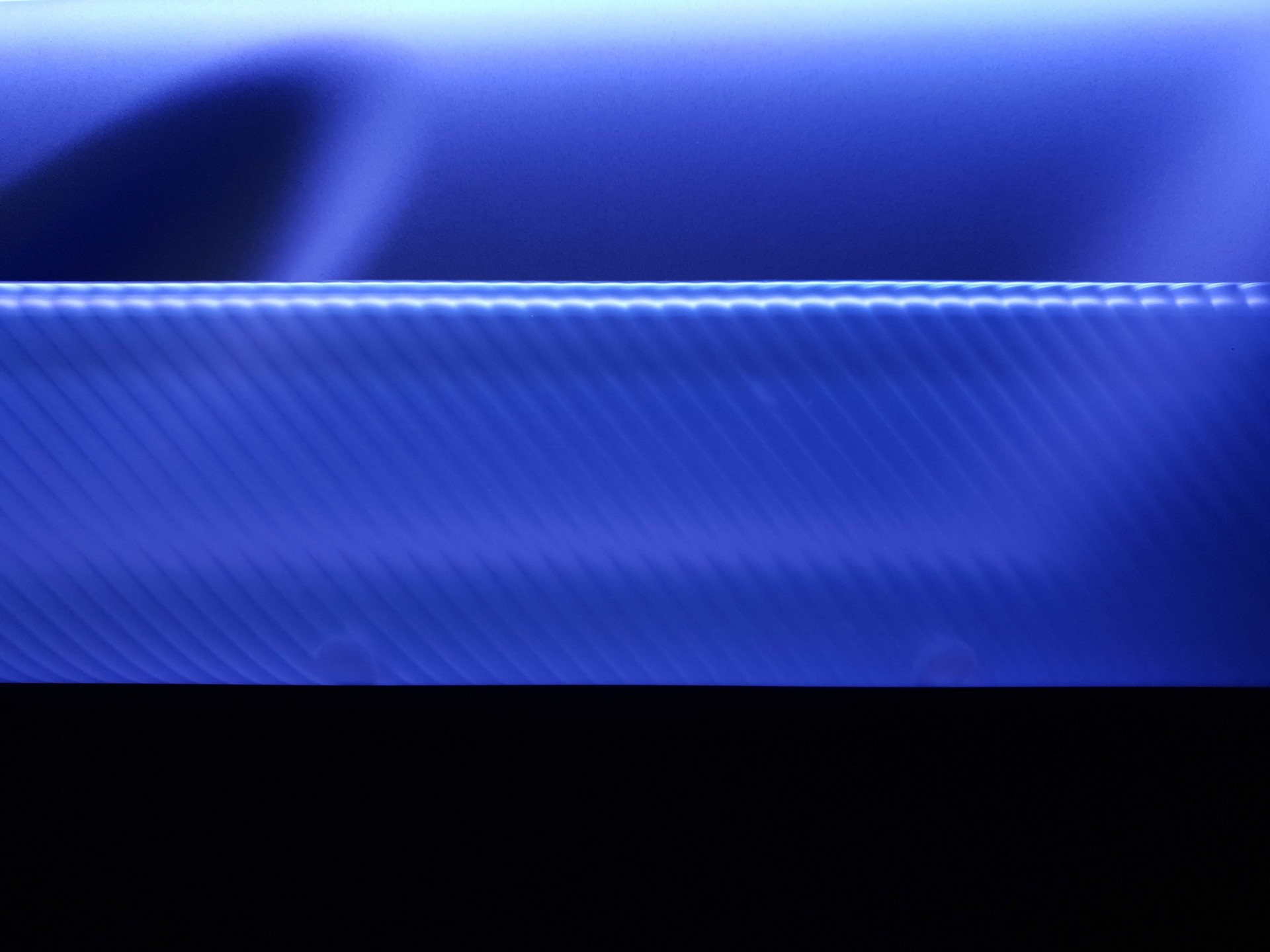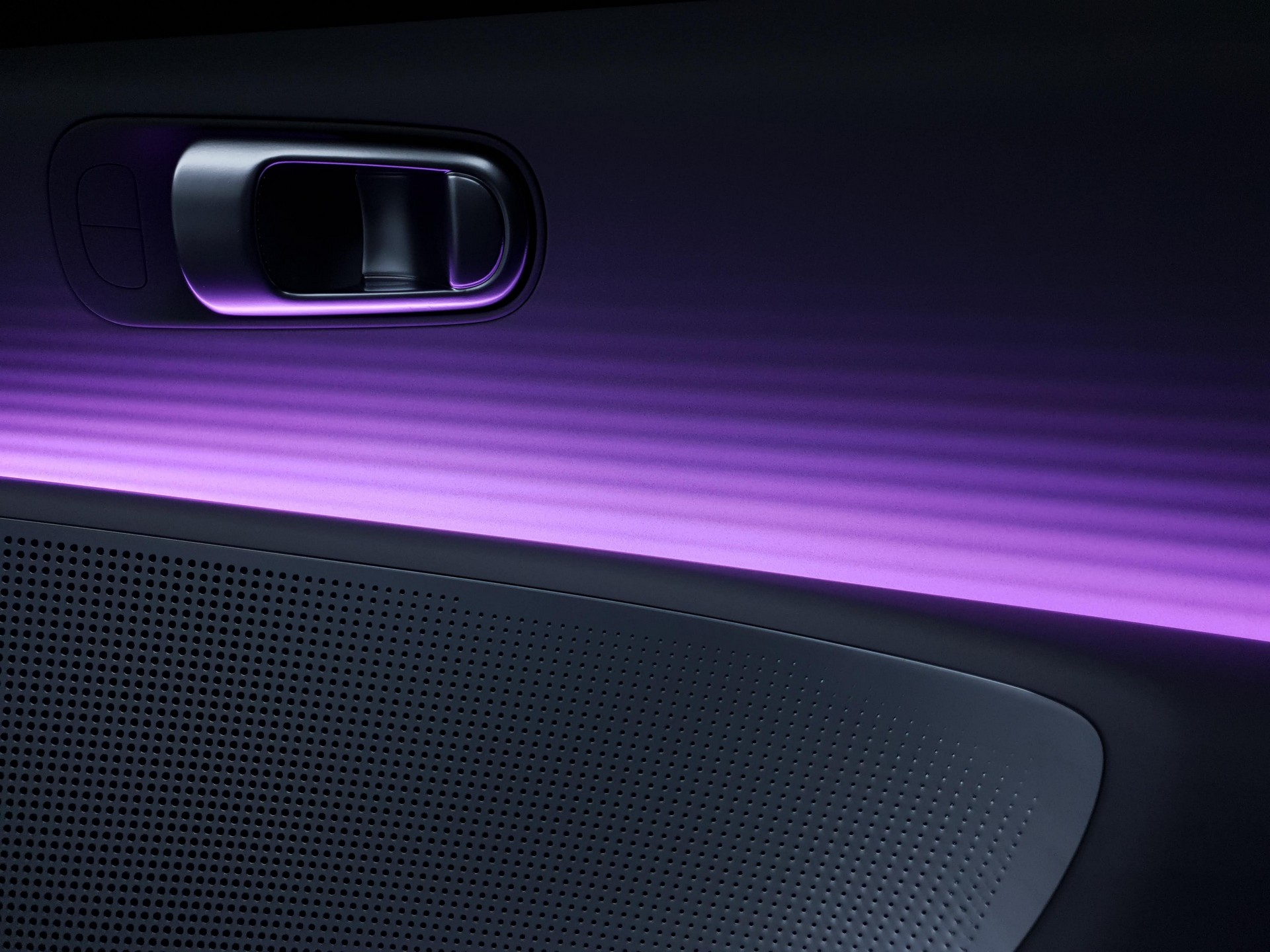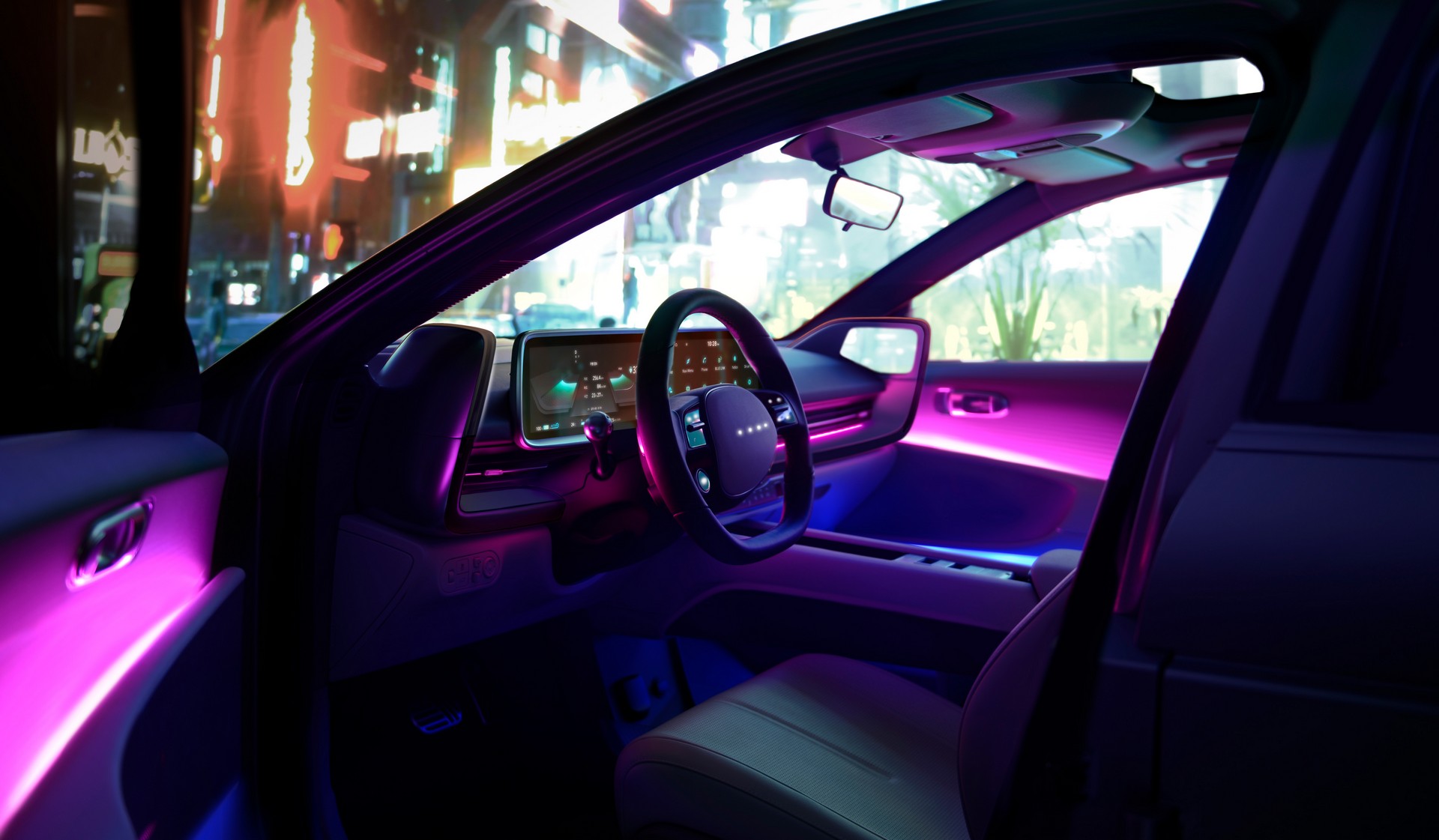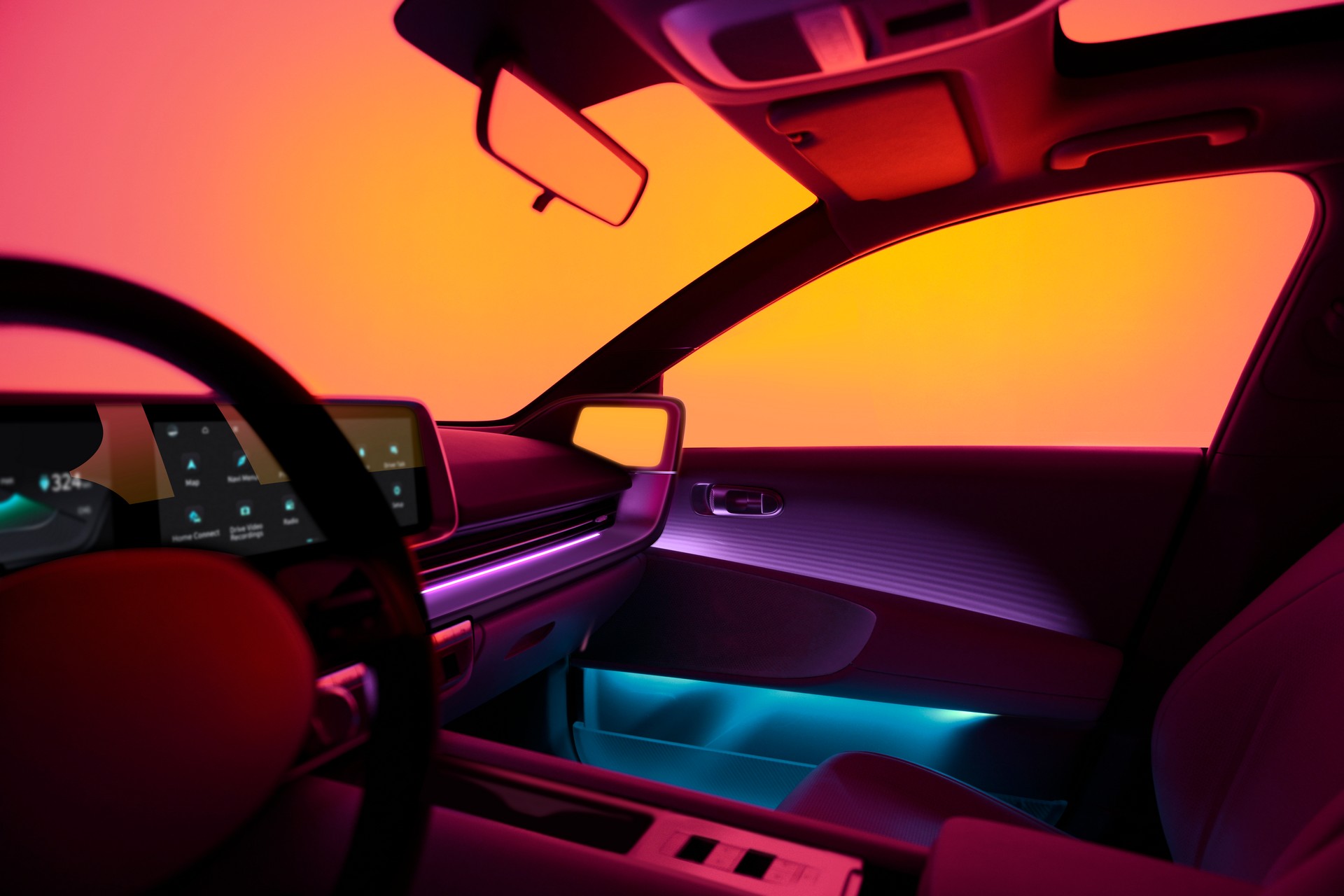What elevates a car from ordinary to extraordinary? Is it design, luxury, performance, or some indefinable set of characteristics that push one model to transcend its competitors?
Those questions don’t have easy answers, but we bring them up because the new Hyundai Ioniq 6 is here to challenge convention.
While the automaker unveiled the model’s swoopy design last month, Hyundai is now following up with initial specifications as well as additional details about one of the sleekest EVs on the market.
Offers 379+ Mile Range And Up To 320 HP
Jumping right into the numbers, the entry-level variant features a 53 kWh battery pack and a rear-mounted electric motor. Hyundai didn’t say how powerful the latter is, but previously suggested the model will have around 215 hp (160 kW / 218 PS). Regardless of the final numbers, this version is expected to have an energy consumption of less than 14 kWh/62 miles (14 kWh/100 km) under the Worldwide Harmonized Light Vehicle Test Procedure (WLTP). This promises to make the Ioniq 6 one of the most energy-efficient EVs on the market.
Buyers will also be able to purchase a long-range variant, which uses a larger 77.4 kWh battery pack. This promises to increase the range to more than 379 miles (610 km) in the WLTP cycle and officials noted that’s roughly a 62 mile (100 km) improvement over the Ioniq 5. This increase is due to a variety of factors including efforts to improve efficiency as well as a low drag coefficient of 0.21.
The long-range Ioniq 6 will be offered with rear- and all-wheel drive, and there will be a dual motor variant producing a combined output of 320 hp (239 kW / 325 PS) and 446 lb-ft (605 Nm) of torque. Those numbers may not seem too remarkable, but they’ll enable the car to run from 0-62 mph (0-100 km/h) in 5.1 seconds.
That’s an N level of acceleration and it’s only natural for there to be questions about a possible N variant. Officials didn’t want to spill the beans during a media briefing yesterday, but all indications are yes and we’ll learn more later this week.
On the topic of performance, the Ioniq 6 features an “EV Performance Tune-up” system. It’s a bit like a customizable driving mode as it enables owners to “freely adjust steering effort, motor power, accelerator pedal sensitivity, and driveline mode” via a few taps on the infotainment system.
It’s nice to see the latter and it’s no surprise the Ioniq 6 rides on the E-GMP architecture. The latter underpins the Ioniq 5 and Kia EV6 as well as the upcoming Ioniq 7.
The Ioniq 6 supports 400V and 800V charging, which is notable as 800V technology is largely limited to premium electric vehicles. This is a boon for consumers and the automaker noted a 350 kW DC fast charger will enable the car to go from a 10-80% charge in a mere 18 minutes.
Another interesting feature is the car’s vehicle-to-load function. It effectively turns the Ioniq 6 into a big battery as owners can purchase an accessory adaptor that enables the model to power everything from tools to lights to outdoor projectors.
A Design That Commands Attention
Getting back to the Ioniq 6’s most eye-catching feature is an exterior design that boasts “clean, simple lines and a pure aerodynamic form that Hyundai designers describe as Emotional Efficiency.”
Daring design is nothing new at Hyundai, as the sixth- and eighth-generation Sonata easily prove, but officials admitted they were “stretching their comfort zone” when it came to the Ioniq 6. However, more power to them as one look at the model will undoubtedly have people asking ‘What is that?’
Hyundai officials see design as a “brand distinguisher” and told us “absolutely” when asked if future Ioniq models will continue to have bold and distinctive designs such as those found on the Ioniq 5 and Ioniq 6.
In the case of the latter, the “electrified streamliner” is a sleek four-door coupe with flush-mounted door handles and graceful, uninterrupted lines. A lot of attention was focused on aerodynamics and the model features active air flaps, wheel gap reducers, and an elliptical wing-inspired spoiler. The model also boasts a “slight boat-tail structure”, underbody aerodynamics, and available digital side mirrors (depending on market).
Officials noted streamlined design dates back decades and gave the classic Saab 92 a nice hat tip. While the design is certainly unique, there’s Ioniq DNA in the form of over 700 Parametric Pixels which put on a light show when approaching.
In terms of size, the Ioniq 6 measures 191.1 inches (4,855 mm) long, 74 inches (1,880 mm) wide, and 58.9 inches (1,495 mm) tall with a wheelbase that spans 116 inches (2,950 mm). That means the car is 1.8 inches (46 mm) shorter than the Sonata, despite having a 4.2 inch (107 mm) longer wheelbase.
A Spacious, Eco-Friendly Interior
The bold design continues in the cabin as drivers will find a “furniture-style” dashboard that is topped by a freestanding display, which consists of a 12-inch digital instrument cluster and a matching 12-inch infotainment system. The latter features Android Auto and Apple CarPlay compatibility as well as “real-time travel radius mapping” based on the car’s current battery level. The latter isn’t the only handy feature as the navigation system will help drivers find the best route as well as charging stations along the way.
Lighting takes center stage as the Ioniq 6 features transparent accents, which allow colored light to shine through. This gives the car a club-like atmosphere and the Dual Color Ambient Lighting system offers six pre-selected themes as well as 64 different colors. The model also boasts a Speed Sync Lighting feature, which increases the brightness of the interior lighting the faster you go.
Elsewhere, the Ioniq 6 is equipped with special seats that are approximately 30 percent thinner than those used in conventional models. They promise to increase passenger space without sacrificing comfort. Customers can also opt for Relaxation Comfort seats, which automatically adjust to the ideal position for taking a quick break or a power nap while waiting for your vehicle to recharge.
Other highlights include minimalist switchgear, an eight-speaker Bose audio system, and four interactive pixel lights on the steering wheel which can relay charging information with a quick glance. Buyers will also find a sound enhancement system that provides a “spaceship-like sound” that varies based on your driving.
The Ioniq 6’s focus on sustainability extends beyond the electric powertrain as customers will find recycled PET fabric or eco-processed leather on the seats. They’re joined by a bio PET fabric headliner and carpeting made from recycled fishing nets.
Hyundai envisions the interior as a place for more than just driving. As they explained, the car can be used as a mobile office as the “bridge-type” center console has parallel bars that allow a laptop to be securely placed on top of them. Hyundai also briefly showed a “smart table,” which can be outfitted to help further increase productivity.
U.S. Launch Scheduled For Early 2023
Wrapping things up is an assortment of driver assistance systems such as Smart Cruise Control, Highway Driving Assist, and Forward Collision-Avoidance Assist with emergency braking. Buyers will also find Intelligent Speed Limit Assist, High Beam Assist, and Evasive Steering Assist.
They’re joined by Blind-Spot Collision-Avoidance Assist, a Blind-Spot View Monitor, Safe Exit Warning, and Remote Smart Parking Assist 2. Hyundai didn’t stop there as the model also has a Surround View Monitor, Forward/Side/Reverse Parking Collision-Avoidance Assist, and Rear Cross-Traffic Collision-Avoidance Assist.
The Hyundai Ioniq 6 will go into production in the third quarter and be available in a handful of markets by the end of the year. U.S. specifications are slated to be announced in December and the model will be launched in America in the first quarter of 2023 as a 2024 model. Hyundai hopes to offer the car in most states, although supply constraints could limit availability.




